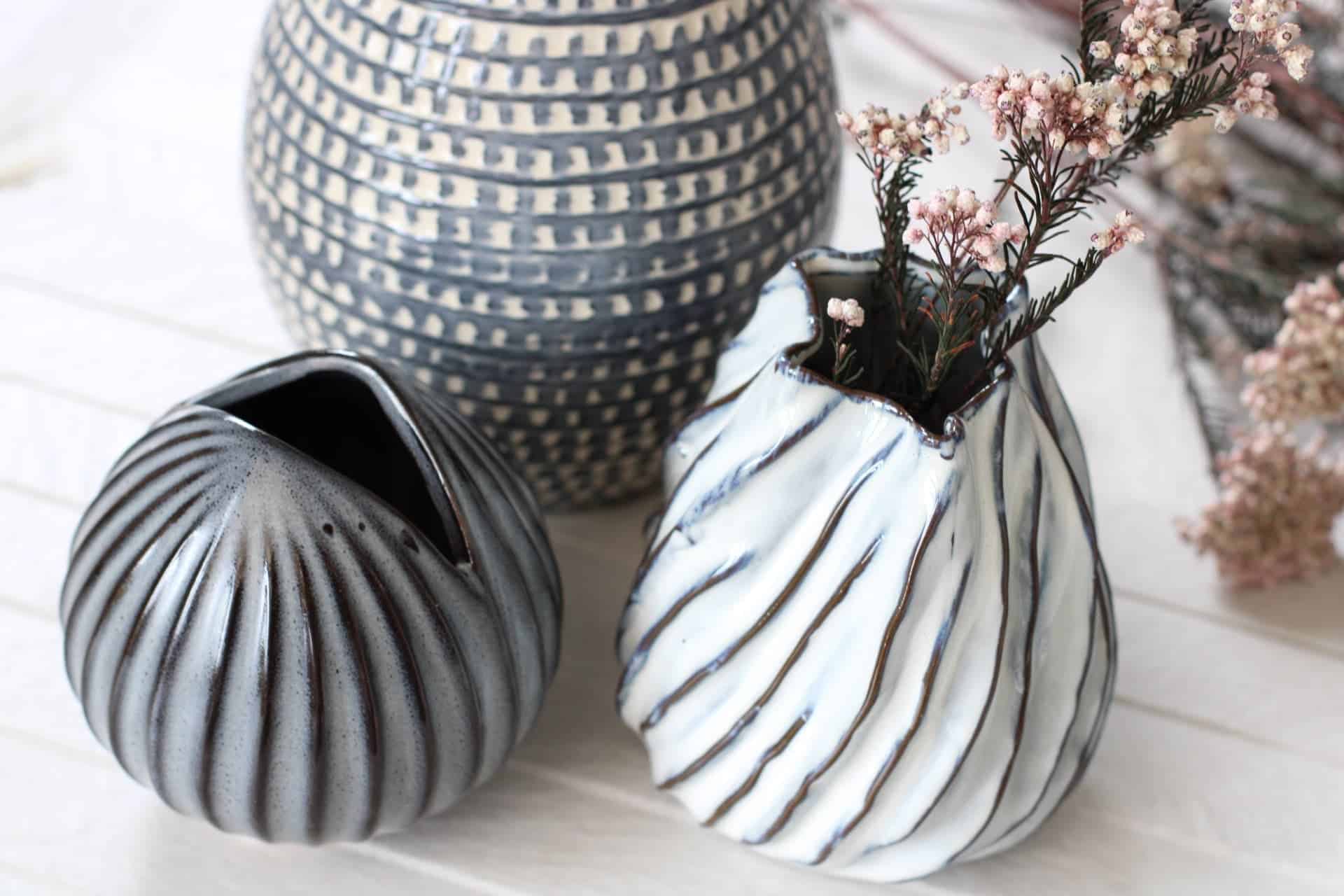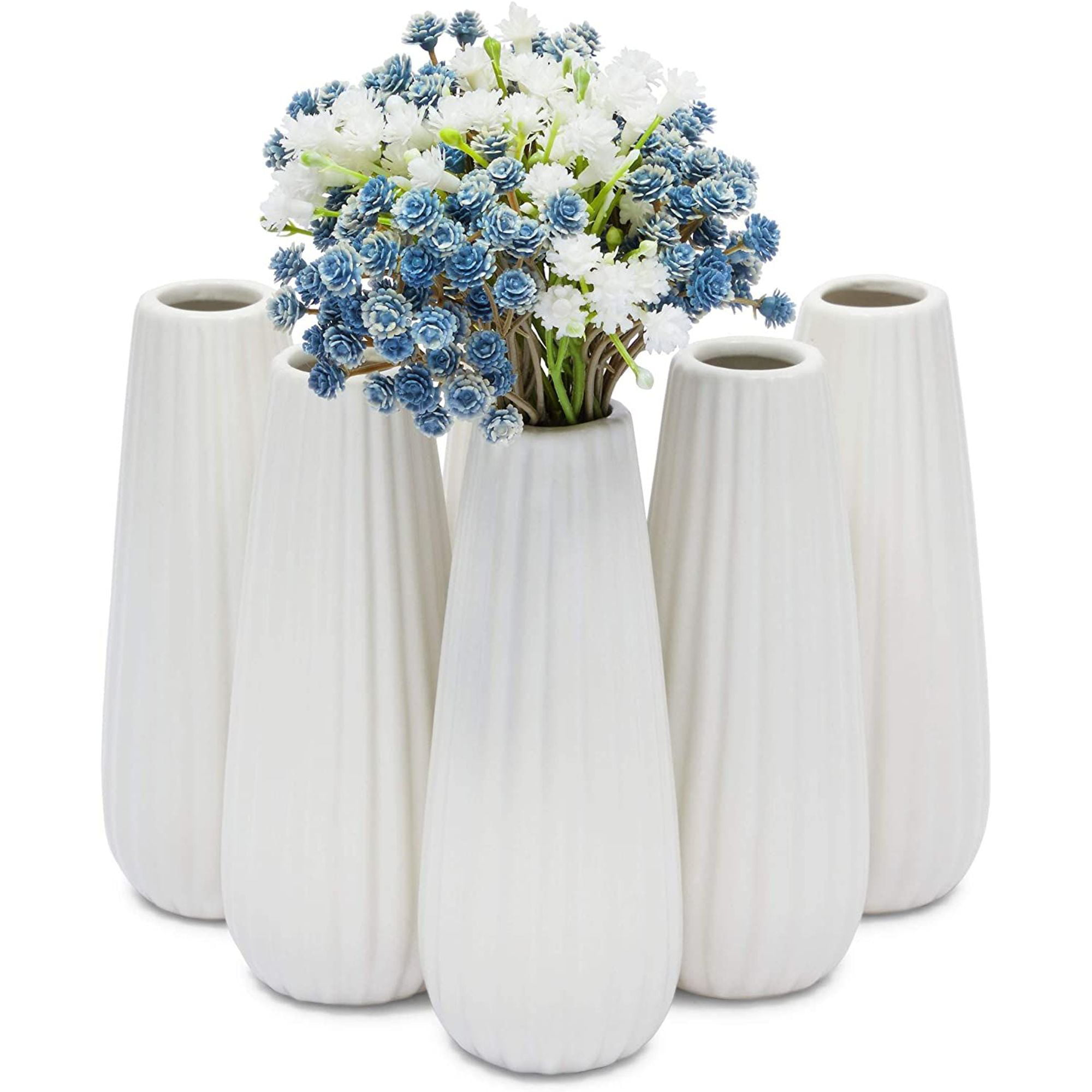Historical Significance of Ceramic Vases

Ceramic vases, with their enduring elegance and timeless appeal, have played a pivotal role in human history. They have transcended mere functionality, becoming objects of artistic expression, cultural significance, and historical importance.
The evolution of ceramic vases mirrors the rise and fall of civilizations, showcasing the diverse artistic styles and technical prowess of different cultures. From the intricate pottery of ancient Egypt to the delicate porcelain of China, ceramic vases have adorned palaces, temples, and homes throughout the ages.
Notable Ceramic Vase Designs
- Greek Amphora: A versatile vessel used for storing and transporting liquids, often adorned with intricate scenes from mythology or daily life.
- Roman Terra Sigillata: Fine red pottery characterized by its glossy surface and intricate reliefs, depicting scenes from nature or human activities.
- Chinese Celadon: A type of green-glazed porcelain developed during the Song Dynasty, known for its delicate translucency and serene beauty.
- Islamic Iznik Pottery: A vibrant and colorful style of ceramics produced in the Ottoman Empire, featuring intricate floral and geometric designs.
- Japanese Imari: A type of porcelain decorated with bold cobalt blue and red patterns, originating from the city of Arita.
Cultural and Artistic Value
Ceramic vases have held immense cultural and artistic value in various societies. They have been used in religious ceremonies, as symbols of status and wealth, and as decorative objects that enhance the beauty of any space.
So, you’re thinking of sprucing up your crib with some snazzy ceramic vases? Good choice, my friend! These babies are not just for holding flowers; they’re also a rad way to add some personality to your home interior design.
Plus, they come in all shapes, sizes, and colors, so you’re sure to find ones that match your style. So go ahead, get creative and let your ceramic vases do the talking!
The designs and motifs on ceramic vases often reflect the beliefs, values, and artistic traditions of the culture that created them. They provide a glimpse into the lives, customs, and aspirations of past civilizations.
Today, ceramic vases continue to be prized as both functional and decorative objects, adding a touch of elegance and history to any home or collection.
While ceramic vases have always been a staple in home decor, I’ve recently discovered the perfect way to elevate them: itachi wallpaper. Imagine a vase adorned with the enigmatic Sharingan eyes of the legendary ninja. The vibrant colors and intricate patterns will not only enhance the vase but also add a touch of anime fandom to your space.
Trust me, it’s the perfect way to combine your love for art, design, and the legendary Uchiha clan.
Techniques and Materials in Ceramic Vase Production

Ceramic vases are made using various techniques and materials. The most common techniques are wheel throwing, hand building, and glazing. The type of clay and glaze used also affects the final appearance of the vase.
Wheel Throwing
Wheel throwing is a technique where a lump of clay is placed on a spinning wheel and shaped using the potter’s hands. This technique allows for the creation of symmetrical and evenly shaped vases.
Hand Building
Hand building involves shaping the clay by hand without using a wheel. This technique allows for more organic and free-form shapes.
Glazing
Glazing is the process of applying a thin layer of glass to the surface of the vase. The glaze is then fired in a kiln, which melts the glaze and creates a smooth, glossy finish.
Types of Clay
The type of clay used in ceramic vase production affects the final appearance and durability of the vase. Some common types of clay include:
- Earthenware: A porous type of clay that is typically fired at a low temperature.
- Stoneware: A denser type of clay that is fired at a higher temperature.
- Porcelain: A very dense and durable type of clay that is fired at a very high temperature.
Types of Glaze, Ceramic vases
The type of glaze used in ceramic vase production affects the final appearance and durability of the vase. Some common types of glaze include:
- Clear glaze: A transparent glaze that allows the color of the clay to show through.
- Opaque glaze: A non-transparent glaze that covers the color of the clay.
- Colored glaze: A glaze that contains pigments to add color to the vase.
Firing
Firing is the process of heating the vase in a kiln to a high temperature. This process hardens the clay and makes the glaze melt and fuse to the surface of the vase.
Decorating
Ceramic vases can be decorated using a variety of techniques, including:
- Carving: Using a sharp tool to create designs in the surface of the vase.
- Stamping: Using a stamp to create patterns on the surface of the vase.
- Painting: Using paint to create designs on the surface of the vase.
Applications and Styles of Ceramic Vases

Ceramic vases are not just decorative pieces but also serve various practical and artistic purposes. They add elegance and sophistication to any space while also providing functionality.
Home Décor
Ceramic vases are widely used as decorative accents in homes. They come in a myriad of shapes, sizes, and designs, complementing different interior design styles. From traditional to modern, contemporary to eclectic, there’s a ceramic vase to suit every taste.
- Traditional: Classic vases with intricate patterns and ornate detailing, reminiscent of ancient Greek or Chinese ceramics.
- Modern: Sleek and minimalist vases with clean lines and simple forms, often in neutral colors like white or black.
- Contemporary: Unique and innovative vases that push the boundaries of design, featuring unconventional shapes and textures.
- Eclectic: A mix of different styles, combining elements from traditional, modern, and contemporary designs to create a distinctive look.
Functional Pottery
Ceramic vases are not just decorative; they can also serve practical purposes. Functional pottery vases are designed for everyday use, such as storing flowers, plants, or other items.
- Flower vases: Designed to hold cut flowers, these vases come in various shapes and sizes to accommodate different types of bouquets.
- Plant pots: Used to grow small plants indoors, these vases provide a stylish and functional way to add greenery to your home.
- Storage jars: Ceramic vases with lids can be used to store a variety of items, from kitchen utensils to bathroom essentials.
Art Objects
Beyond their decorative and functional roles, ceramic vases can also be considered works of art. Skilled artisans create unique and visually stunning pieces that are highly valued by collectors.
- Sculptural vases: These vases are designed with an emphasis on form and texture, creating abstract or figurative works of art.
- Painted vases: Ceramic vases can be adorned with intricate paintings, showcasing the artist’s creativity and skill.
- Glazed vases: The application of different glazes during the firing process creates unique and captivating visual effects on the surface of the vase.